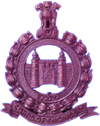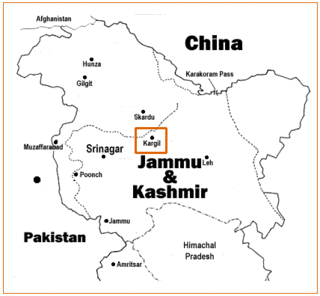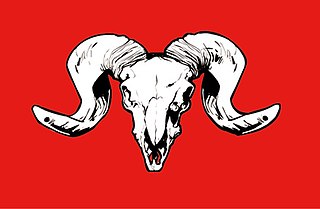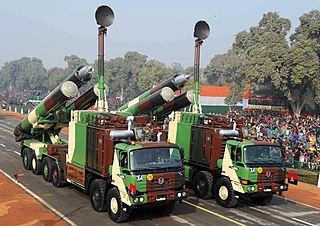
The Armed Forces of the Republic of Kazakhstan is the unified armed forces of Kazakhstan. It consists of three branches as well as four independent formations. The National Guard, Civil Defense, Border Service and the State Security Service serve as militarized affiliates of the armed forces. The national defence policy aims are based on the Constitution of Kazakhstan. They guarantee the preservation of the independence and sovereignty of the state and the integrity of its land area, territorial waters and airspace and its constitutional order. The armed forces of Kazakhstan act under the authority of the Kazakhstan Ministry of Defence.

The Jat Regiment also known as The Royal Jats is an infantry regiment of the Indian Army, of which it is one of the longest-serving and most decorated regiments. The regiment has won 19 Battle Honours between 1839 and 1947, and post-independence it has won Five Battle Honours, including 3 Ashok Chakra, 2 Victoria Cross, 2 George Cross, 13 Kirti Chakra, 8 Mahavir Chakra, 3 Military Medal, 53 Shaurya Chakras, 39 Vir Chakras and 343 Sena Medals. During its 200-year service history, the regiment has participated in various actions and operations in India and abroad, including the First and the Second World Wars. Numerous battalions of the Jat Regiment, including the 14th Murray's Jat Lancers, fought in the First World War.

The Parachute Regiment is an airborne and special forces regiment of the Indian Army. It was raised in 1945 as part of the British Indian Army but was disbanded after World War II and was re-raised in 1952 as part of the Indian Army. Currently it consists of fifteen Special Forces, two Territorial Army and one Rashtriya Rifles battalions.

The South African Army Artillery Formation is the controlling entity of all South African Army artillery units. It draws much of its history from the South African Artillery, established in 1934 but with roots that reach back to 1921. The formation consists of both regular and reserve units. There is a separate South African Army Air Defence Artillery Formation that directs army anti-aircraft warfare units.

The 2nd Guards Tatsinskaya Tank Corps was a tank corps of the Soviet Union's Red Army that saw service during World War II on the Eastern Front of Europe. The unit's most notable moment was in the raid on Tatsinskaya during Operation Little Saturn in World War II. After the war, it continued to serve with the Soviet occupation forces in Central Europe. It was originally the 24th Tank Corps. The formation had approximately the same size and combat power as a Wehrmacht Panzer Division, and less than a British Armoured Division had during World War II.

The Indian Army Corps of Engineers is a combat support arm which provides combat engineering support, develops infrastructure for armed forces and other defence organisations and maintains connectivity along the borders, besides helping the civil authorities during natural disasters. College of Military Engineering, Pune (CME) is the premier technical and tactical training institution of the Indian Army Corps of Engineers.

The Kargil War order of battle (KWORBAT), is a deposition and systematic combatant structure of the Indian Army troops and the unified Pakistan Armed Forces combat commands, active in the Kargil region in 1999, during the Kargil War. The Indian Army orbat is based on the publications provided by the Indian military authors, news media and official sources.

The 1st Artillery Brigade was a support formation of the British Army from 1961-77 and from 1997. Part of the 3rd Division, it oversaw all army close support artillery and deep fires units. Under the Future Soldier programme, the brigade merged with 1st Armoured Infantry Brigade to form 1st Deep Reconnaissance Strike Brigade Combat Team.
20 SATA Regiment, nicknamed the Alma Mater of Locators and The Originals, is a Surveillance and Target Acquisition (SATA) artillery regiment, which is part of the Regiment of Artillery of the Indian Army.
27 Air Defence Missile Regiment (Amritsar Airfield) is an Air Defence regiment of the Indian Army.
156 Light Air Defence Missile Regiment (Self Propelled) is an Air Defence regiment of the Indian Army.
130 Air Defence Regiment is part of the Corps of Army Air Defence of the Indian Army.
15 Medium Regiment is part of the Regiment of Artillery of the Indian Army.
151 Air Defence Regiment (Self Propelled) is part of the Corps of Army Air Defence of the Indian Army. It consists of 1511, 1512 and 1513 air defence batteries.
286 Medium Regiment is part of the Regiment of Artillery of the Indian Army.
269 Medium Regiment (Self Propelled) is part of the Regiment of Artillery of the Indian Army.

1889 Missile Regiment (Kargil) is a missile equipped regiment, which is part of the Regiment of Artillery of the Indian Army.

436 Air Defence Missile Regiment (Self Propelled) is part of the Corps of Army Air Defence of the Indian Army.
218 Medium Regiment is part of the Regiment of Artillery of the Indian Army.
153 Medium Regiment (Self-Propelled) is part of the Regiment of Artillery of the Indian Army.










